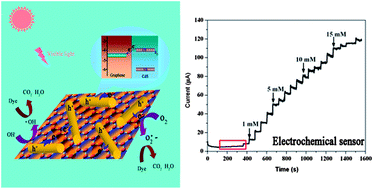CdS nanorods/reduced graphene oxide nanocomposites for photocatalysis and electrochemical sensing†
Abstract
CdS

* Corresponding authors
a
Department of Chemistry and Institute of Environment, Energy and Sustainability, The Chinese University of Hong Kong, New Territories, Shatin, Hong Kong, China
E-mail:
jimyu@cuhk.edu.hk
b
Institute of Process Engineering, Chinese Academy of Science, Beijing 100190, People's Republic of China
E-mail:
zhanggj@home.ipe.ac.cn
CdS

 Please wait while we load your content...
Something went wrong. Try again?
Please wait while we load your content...
Something went wrong. Try again?
X. An, X. Yu, J. C. Yu and G. Zhang, J. Mater. Chem. A, 2013, 1, 5158 DOI: 10.1039/C3TA00029J
To request permission to reproduce material from this article, please go to the Copyright Clearance Center request page.
If you are an author contributing to an RSC publication, you do not need to request permission provided correct acknowledgement is given.
If you are the author of this article, you do not need to request permission to reproduce figures and diagrams provided correct acknowledgement is given. If you want to reproduce the whole article in a third-party publication (excluding your thesis/dissertation for which permission is not required) please go to the Copyright Clearance Center request page.
Read more about how to correctly acknowledge RSC content.
 Fetching data from CrossRef.
Fetching data from CrossRef.
This may take some time to load.
Loading related content
